Glycine,N-(2-hydroxybenzoyl)-
Modify Date: 2025-08-27 14:34:35
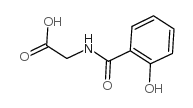
Glycine,N-(2-hydroxybenzoyl)- structure
|
Common Name | Glycine,N-(2-hydroxybenzoyl)- | ||
|---|---|---|---|---|
| CAS Number | 487-54-7 | Molecular Weight | 195.17200 | |
| Density | 1.401 g/cm3 | Boiling Point | 489.8ºC at 760 mmHg | |
| Molecular Formula | C9H9NO4 | Melting Point | 164-169 °C | |
| MSDS | USA | Flash Point | 250ºC | |
| Name | salicyluric acid |
|---|---|
| Synonym | More Synonyms |
| Density | 1.401 g/cm3 |
|---|---|
| Boiling Point | 489.8ºC at 760 mmHg |
| Melting Point | 164-169 °C |
| Molecular Formula | C9H9NO4 |
| Molecular Weight | 195.17200 |
| Flash Point | 250ºC |
| Exact Mass | 195.05300 |
| PSA | 86.63000 |
| LogP | 0.59750 |
| Vapour Pressure | 2.08E-10mmHg at 25°C |
| InChIKey | ONJSZLXSECQROL-UHFFFAOYSA-N |
| SMILES | O=C(O)CNC(=O)c1ccccc1O |
| Storage condition | Store at 0°C |
Synonym:Glycine, N-(2-hydroxybenzoyl)-; Glycine, N-salicyloyl-; N-(2-Hydroxybenzoyl)glycine; N-o-Hydroxybenzoylglycine; o-Hydroxyhippuric acid; Salicyloylglycine; Salicyluric acid Section 2 - COMPOSITION, INFORMATION ON INGREDIENTS
Risk Phrases: None Listed. Section 3 - HAZARDS IDENTIFICATION EMERGENCY OVERVIEW
The toxicological properties of this material have not been fully investigated. Potential Health Effects Eye: May cause eye irritation. Skin: May cause skin irritation. May be harmful if absorbed through the skin. The toxicological properties of this material have not been fully investigated. Ingestion: May cause irritation of the digestive tract. The toxicological properties of this substance have not been fully investigated. May be harmful if swallowed. Inhalation: May cause respiratory tract irritation. The toxicological properties of this substance have not been fully investigated. May be harmful if inhaled. Chronic: No information found. Section 4 - FIRST AID MEASURES Eyes: In case of contact, immediately flush eyes with plenty of water for at least 15 minutes. Get medical aid. Skin: In case of contact, flush skin with plenty of water. Remove contaminated clothing and shoes. Get medical aid if irritation develops and persists. Wash clothing before reuse. Ingestion: If swallowed, do not induce vomiting unless directed to do so by medical personnel. Never give anything by mouth to an unconscious person. Get medical aid. Inhalation: If inhaled, remove to fresh air. If not breathing, give artificial respiration. If breathing is difficult, give oxygen. Get medical aid. Notes to Physician: Treat symptomatically and supportively. Section 5 - FIRE FIGHTING MEASURES General Information: As in any fire, wear a self-contained breathing apparatus in pressure-demand, MSHA/NIOSH (approved or equivalent), and full protective gear. Dusts at sufficient concentrations can form explosive mixtures with air. During a fire, irritating and highly toxic gases may be generated by thermal decomposition or combustion. Extinguishing Media: Use extinguishing media most appropriate for the surrounding fire. Section 6 - ACCIDENTAL RELEASE MEASURES General Information: Use proper personal protective equipment as indicated in Section 8. Spills/Leaks: Vacuum or sweep up material and place into a suitable disposal container. Avoid generating dusty conditions. Provide ventilation. Section 7 - HANDLING and STORAGE Handling: Wash thoroughly after handling. Remove contaminated clothing and wash before reuse. Use with adequate ventilation. Minimize dust generation and accumulation. Avoid contact with eyes, skin, and clothing. Avoid ingestion and inhalation. Storage: Store in a cool, dry place. Keep container closed when not in use. Section 8 - EXPOSURE CONTROLS, PERSONAL PROTECTION Engineering Controls: Facilities storing or utilizing this material should be equipped with an eyewash facility and a safety shower. Use process enclosure, local exhaust ventilation, or other engineering controls to control airborne levels. Exposure Limits CAS# 487-54-7: Personal Protective Equipment Eyes: Wear appropriate protective eyeglasses or chemical safety goggles as described by OSHA's eye and face protection regulations in 29 CFR 1910.133 or European Standard EN166. Skin: Wear appropriate protective gloves to prevent skin exposure. Clothing: Wear appropriate protective clothing to minimize contact with skin. Respirators: A respiratory protection program that meets OSHA's 29 CFR 1910.134 and ANSI Z88.2 requirements or European Standard EN 149 must be followed whenever workplace conditions warrant respirator use. Section 9 - PHYSICAL AND CHEMICAL PROPERTIES Physical State: Crystalline powder Color: light gray Odor: Not available. pH: Not available. Vapor Pressure: Not available. Viscosity: Not available. Boiling Point: Not available. Freezing/Melting Point: 167.00 - 169.00 deg C Autoignition Temperature: Not available. Flash Point: Not applicable. Explosion Limits, lower: Not available. Explosion Limits, upper: Not available. Decomposition Temperature: Solubility in water: Specific Gravity/Density: Molecular Formula: C9H9NO4 Molecular Weight: 195.17 Section 10 - STABILITY AND REACTIVITY Chemical Stability: Stable under normal temperatures and pressures. Conditions to Avoid: Dust generation. Incompatibilities with Other Materials: Strong oxidizing agents, strong bases. Hazardous Decomposition Products: Thermal decomposition or combustion may produce carbon monoxide, carbon dioxide, and nitrogen oxides.. Hazardous Polymerization: Has not been reported Section 11 - TOXICOLOGICAL INFORMATION RTECS#: CAS# 487-54-7: MR8160000 LD50/LC50: Not available. Carcinogenicity: 2-Hydroxyhippuric acid - Not listed by ACGIH, IARC, or NTP. Other: See actual entry in RTECS for complete information. Section 12 - ECOLOGICAL INFORMATION Section 13 - DISPOSAL CONSIDERATIONS Dispose of in a manner consistent with federal, state, and local regulations. Section 14 - TRANSPORT INFORMATION IATA Shipping Name: Not regulated. Hazard Class: UN Number: Packing Group: IMO Shipping Name: Not regulated. Hazard Class: UN Number: Packing Group: RID/ADR Shipping Name: Not regulated. Hazard Class: UN Number: Packing group: Section 15 - REGULATORY INFORMATION European/International Regulations European Labeling in Accordance with EC Directives Hazard Symbols: Not available. Risk Phrases: Safety Phrases: S 24/25 Avoid contact with skin and eyes. WGK (Water Danger/Protection) CAS# 487-54-7: No information available. Canada None of the chemicals in this product are listed on the DSL/NDSL list. CAS# 487-54-7 is not listed on Canada's Ingredient Disclosure List. US FEDERAL TSCA CAS# 487-54-7 is not listed on the TSCA inventory. It is for research and development use only. SECTION 16 - ADDITIONAL INFORMATION N/A |
CHEMICAL IDENTIFICATION
HEALTH HAZARD DATAACUTE TOXICITY DATA
|
| Precursor 9 | |
|---|---|
| DownStream 6 | |
| HS Code | 2924299090 |
|---|---|
| Summary | 2924299090. other cyclic amides (including cyclic carbamates) and their derivatives; salts thereof. VAT:17.0%. Tax rebate rate:13.0%. . MFN tariff:6.5%. General tariff:30.0% |
| 2-Hydroxyhippuric acid |
| EINECS 207-661-6 |
| 2-[(2-hydroxybenzoyl)amino]acetic acid |
| MFCD00002695 |
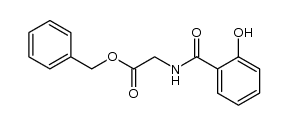 CAS#:178633-73-3
CAS#:178633-73-3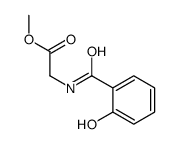 CAS#:55493-89-5
CAS#:55493-89-5 CAS#:69-72-7
CAS#:69-72-7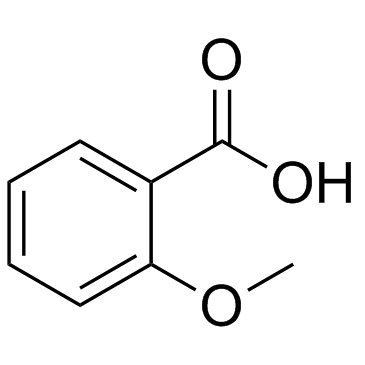 CAS#:579-75-9
CAS#:579-75-9 CAS#:856119-90-9
CAS#:856119-90-9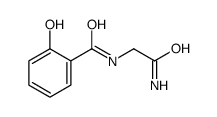 CAS#:56145-98-3
CAS#:56145-98-3![Benzoic acid,2-[(methoxycarbonyl)oxy]- Structure](https://image.chemsrc.com/caspic/084/14216-34-3.png) CAS#:14216-34-3
CAS#:14216-34-3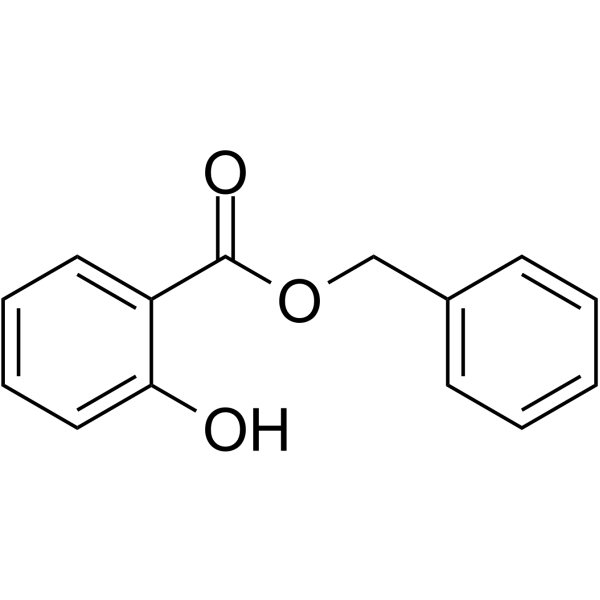 CAS#:118-58-1
CAS#:118-58-1 CAS#:27796-49-2
CAS#:27796-49-2![Acetic acid,hydroxy[(2-hydroxybenzoyl)amino]- (9CI) structure](https://image.chemsrc.com/caspic/447/136492-94-9.png) CAS#:136492-94-9
CAS#:136492-94-9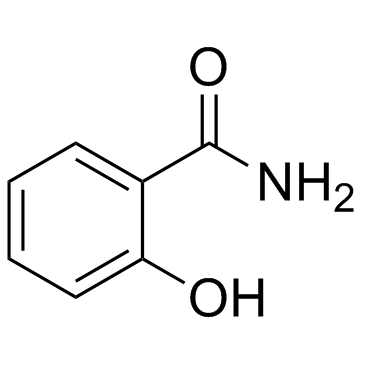 CAS#:65-45-2
CAS#:65-45-2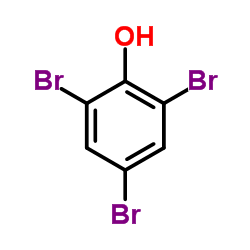 CAS#:118-79-6
CAS#:118-79-6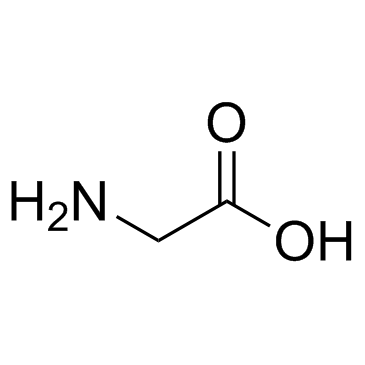 CAS#:56-40-6
CAS#:56-40-6